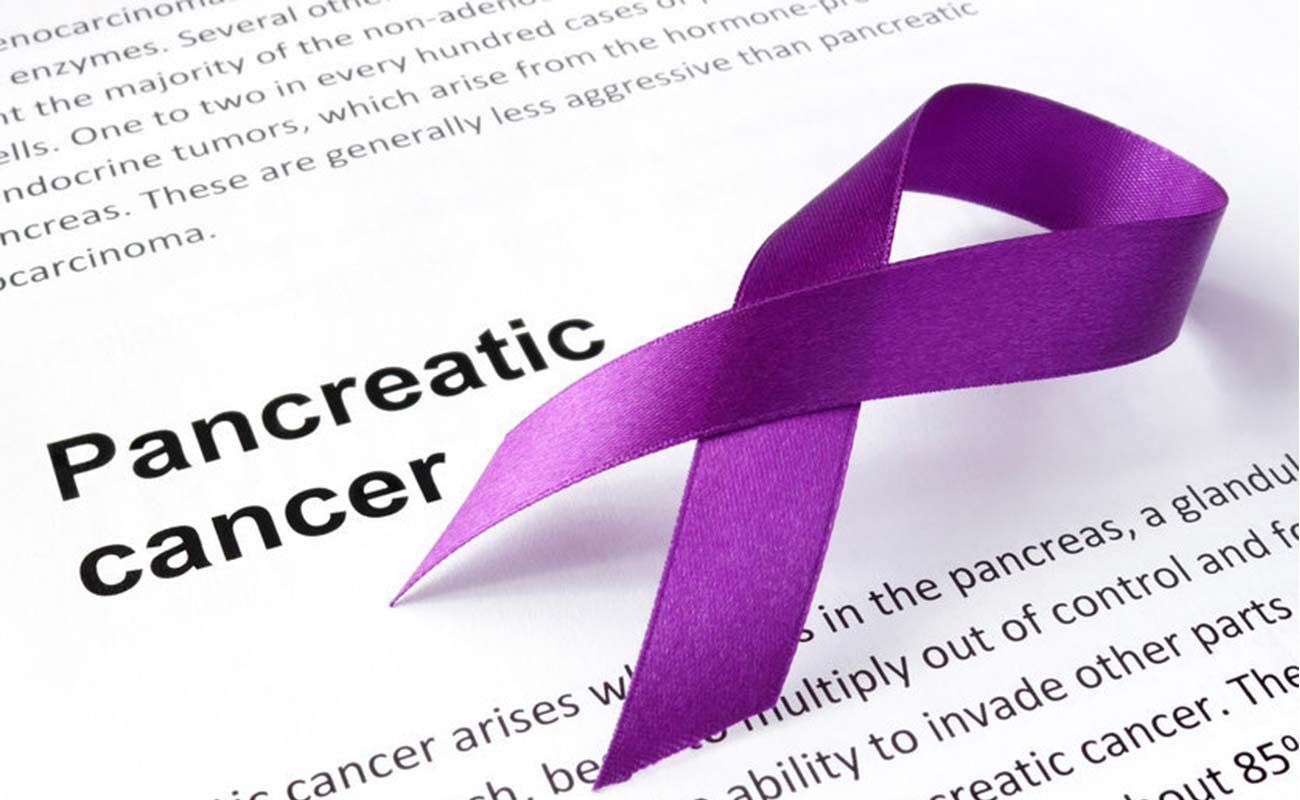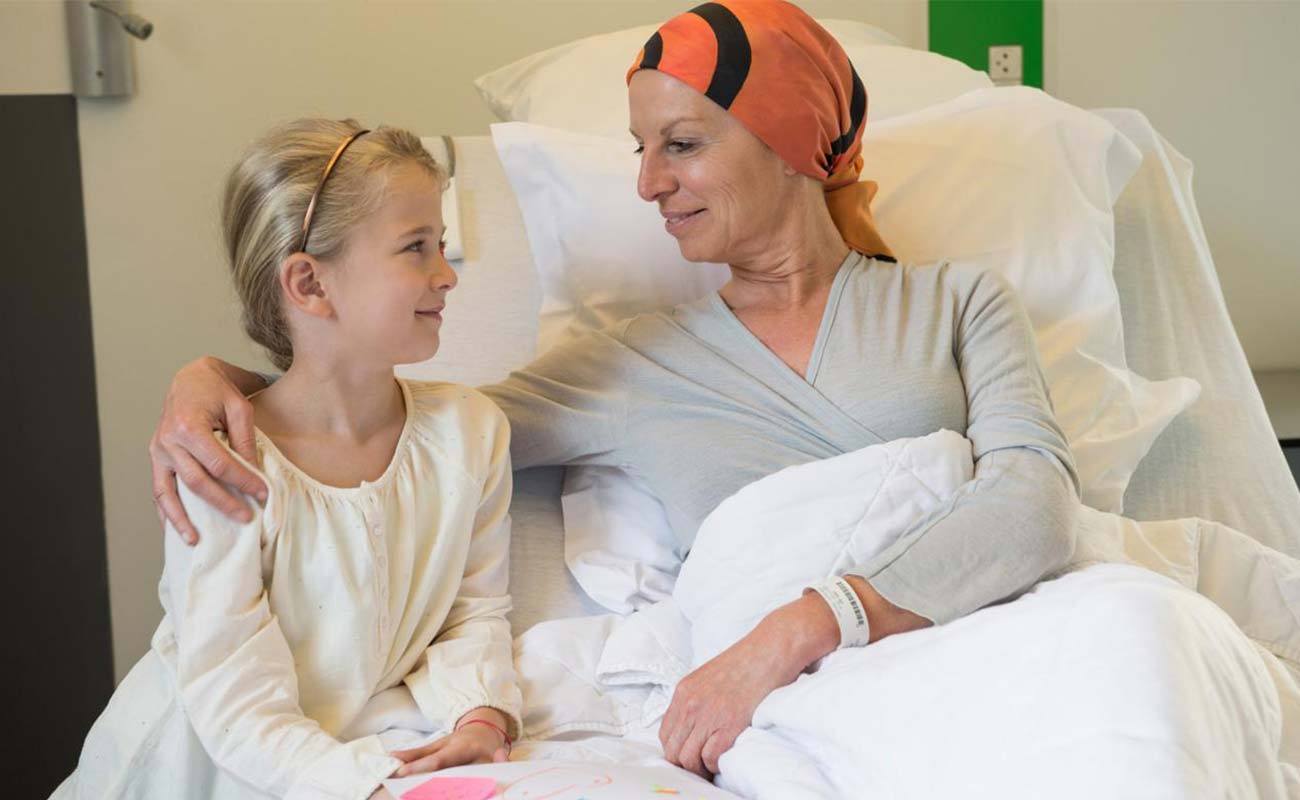it is a disease in which malignant (cancerous) cells form in the tissues of the pancreas. The pancreas is a gland located behind the stomach and in front of the spine. The pancreas produces digestive juices and hormones that regulate blood sugar. Cells called exocrine pancreas cells produce the digestive juices, while cells called endocrine pancreas cells produce the hormones. The majority of pancreatic cancers start in the exocrine cells.
Signs and symptoms of pancreatic cancer often don't occur until the disease is advanced. When signs and symptoms do appear, they may include:
See your doctor if you experience unexplained weight loss with or without a new diagnosis of diabetes or if you have persistent fatigue, abdominal pain, jaundice, or other signs and symptoms that bother you. Many diseases and conditions other than cancer may cause similar signs and symptoms, so your doctor may check for these conditions as well as for pancreatic cancer.
Scientists don’t know exactly what causes most pancreatic cancers, but they have found several risk factors that can make a person more likely to get this disease. Some of these risk factors affect the DNA of cells in the pancreas, which can result in abnormal cell growth and may cause tumors to form.
DNA is the chemical in our cells that carries our genes, which control how our cells function. We look like our parents because they are the source of our DNA. But DNA affects more than just how we look.
Some genes control when our cells grow, divide into new cells, and die:
Cancers can be caused by DNA changes (gene mutations) that turn on oncogenes or turn off tumor suppressor genes.
Inherited gene mutations
Some people inherit gene changes from their parents that raise their risk of pancreatic cancer. Sometimes these gene changes are part of syndromes that include increased risks of other health problems as well. These syndromes, which cause a small portion of all pancreatic cancers, are discussed in Risk Factors for Pancreatic Cancer.
Acquired gene mutations
Most gene mutations related to cancers of the pancreas occur after a person is born, rather than having been inherited. These acquired gene mutations sometimes result from exposure to cancer-causing chemicals (like those found in tobacco smoke). But often what causes these changes is not known. Many gene changes are probably just random events that sometimes happen inside a cell, without having an outside cause.
Some of the DNA changes often seen in sporadic (non-inherited) cases of pancreatic cancer are the same as those seen in inherited cases, while others are different. For example, many sporadic cases of exocrine pancreatic cancer have changes in the p16 and TP53 genes, which can also be seen in some genetic syndromes. But many pancreatic cancers also have changes in genes such as KRAS, BRAF, and DPC4 (SMAD4), which are not part of inherited syndromes. Other gene changes can also be found in pancreatic cancers, although often it’s not clear what has caused these changes.
If a doctor suspects that a person has pancreatic cancer, he or she will first ask about the person's medical history, family history, and examine the person to look for signs of the disease. An appropriate and timely diagnosis is very important. If possible, tests should be done at a center that has experience with the disease. The tests listed below may be used to diagnose pancreatic cancer.
Carbohydrate antigen 19-9 (CA19-9) is a tumor marker. A tumor marker is a substance produced by a tumor that may be found at higher levels if cancer is present and can be measured in the blood. CA19-9 is often higher in people with pancreatic cancer. High levels of CA 19-9 should not be used as the only test to make the diagnosis of pancreatic cancer, because high levels of CA 19-9 also can be a sign other conditions. This can be a sign of other types of cancer, such as colorectal, liver, and esophageal cancers. It can also occur in noncancerous conditions, such as pancreatitis, cirrhosis of the liver, and a non-cancerous blockage of the common bile duct.
Imaging tests help doctors find out where the cancer is located and whether it has spread from the pancreas to other parts of the body. Pancreatic cancer often does not develop as a single large tumor, which means it can sometimes be difficult to see on imaging tests. However, newer computed tomography scanners (see below) produce better, clearer images that can make it easier to find. A radiologist is a doctor who specializes in interpreting imaging tests.
If the cancer has spread to other organs, a biopsy may also be needed from one of these other sites, such as the liver. Again, this can be through the skin, as explained above, or less commonly, by surgery. This type of surgery can be done through a larger incision in the abdomen, called a laparotomy. Or, it can be done using much smaller incisions that provide openings for a tiny camera and surgical instruments, called a laparoscopic approach.
Rarely, a biopsy may not show that cancer cells are present because the area sampled may be made up of areas of inflammation and/or fibrosis (scar-like tissue), in addition to cancer cells. In general, before a patient starts treatment, every effort is made to confirm that cancer it present, even if this means that multiple biopsies are needed. One exception is for patients with a mass located in one area of the pancreas that can be removed with surgery even if a biopsy is not performed or the biopsy does not show cancer cells.
Treatment for pancreatic cancer depends on the stage and location of the cancer as well as on your overall health and personal preferences.
The first goal of pancreatic cancer treatment is to eliminate the cancer, when possible. When that isn't an option, the focus may be on preventing the pancreatic cancer from growing or causing more harm.
When pancreatic cancer is advanced and treatments aren't likely to offer a benefit, your doctor will help to relieve symptoms and make you as comfortable as possible.
Surgery may be an option if your pancreatic cancer is confined to the pancreas. Operations used in people with pancreatic cancer include:
The Whipple procedure involves removing the head of your pancreas, as well as a portion of your small intestine (duodenum), your gallbladder and part of your bile duct. Part of your stomach may be removed as well. Your surgeon reconnects the remaining parts of your pancreas, stomach and intestines to allow you to digest food.
Whipple surgery carries a risk of infection and bleeding. After the surgery, some people experience nausea and vomiting that can occur if the stomach has difficulty emptying (delayed gastric emptying).
Expect a long recovery after a Whipple procedure. You'll spend several days in the hospital and then recover for several weeks at home.
Research shows pancreatic cancer surgery tends to cause fewer complications when done by experienced surgeons. Don't hesitate to ask about your surgeon's experience with pancreatic cancer surgery. If you have any doubts, get a second opinion.
Radiation therapy uses high-energy beams, such as those made from X-rays and protons, to destroy cancer cells. You may receive radiation treatments before or after cancer surgery, often in combination with chemotherapy. Or, your doctor may recommend a combination of radiation and chemotherapy treatments when your cancer can't be treated surgically.
Radiation therapy usually comes from a machine that moves around you, directing radiation to specific points on your body (external beam radiation). In specialized medical centers, radiation therapy may be delivered during surgery (intraoperative radiation).
Radiation therapy traditionally uses X-rays to treat cancer. Some medical centers may offer radiation therapy that uses protons, which may be a treatment option for some people with advanced pancreatic cancer.
Chemotherapy uses drugs to help kill cancer cells. Chemotherapy can be injected into a vein or taken orally. You may receive only one chemotherapy drug, or you may receive a combination of chemotherapy drugs.
Chemotherapy can also be combined with radiation therapy (chemoradiation). Chemoradiation is typically used to treat cancer that has spread beyond the pancreas, but only to nearby organs and not to distant regions of the body. This combination may also be used after surgery to reduce the risk that pancreatic cancer may recur.
In people with advanced pancreatic cancer, chemotherapy may be used alone or it may be combined with targeted drug therapy.
Clinical trials are studies to test new forms of treatment, such as new drugs, new approaches to surgery or radiation treatments, and novel methods such as gene therapy. If the treatment being studied proves to be safer or more effective than are current treatments, it can become the new standard of care.
Clinical trials for pancreatic cancer may give you a chance to try new targeted therapy drugs, immunotherapy treatments or vaccines.
Clinical trials can't guarantee a cure, and they may have serious or unexpected side effects. On the other hand, cancer clinical trials are closely monitored to ensure they're conducted as safely as possible. And they offer access to treatments that wouldn't otherwise be available to you.
Talk to your doctor about what clinical trials might be appropriate for you.
Palliative care is specialized medical care that focuses on providing relief from pain and other symptoms of a serious illness. Palliative care specialists work with you, your family and your other doctors to provide an extra layer of support that complements your ongoing care. Palliative care can be used while undergoing other aggressive treatments, such as surgery, chemotherapy or radiation therapy.
When palliative care is used along with all of the other appropriate treatments — even soon after your diagnosis — people with cancer may feel better and live longer.
Palliative care is provided by a team of doctors, nurses and other specially trained professionals. Palliative care teams aim to improve the quality of life for people with cancer and their families. This form of care is offered alongside curative or other treatments you may be receiving. Palliative care is not the same as hospice care or end-of-life care.
No complementary or alternative treatments have been found to effectively treat pancreatic cancer.
But complementary and alternative medicine treatments may help with signs and symptoms you experience due to your cancer or cancer treatments. Talk to your doctor about your options.
People with cancer frequently experience distress. Some research suggests distress is more common in people with pancreatic cancer than it is in people with other types of cancer.
If you're distressed, you may have difficulty sleeping and find yourself constantly thinking about your cancer. You may feel angry or sad.
Discuss your feelings with your doctor. Specialists can help you sort through your feelings and help you devise strategies for coping. In some cases, medications may help.
Complementary and alternative therapies may also help you cope with distress. Examples include:
Talk to your doctor if you're interested in complementary and alternative treatments.
ُSources: mayoclinic.org, cancer.net, cancer.org, pathology.jhu.edu, mayoclinic.org, webmd.com.
Submit Comment